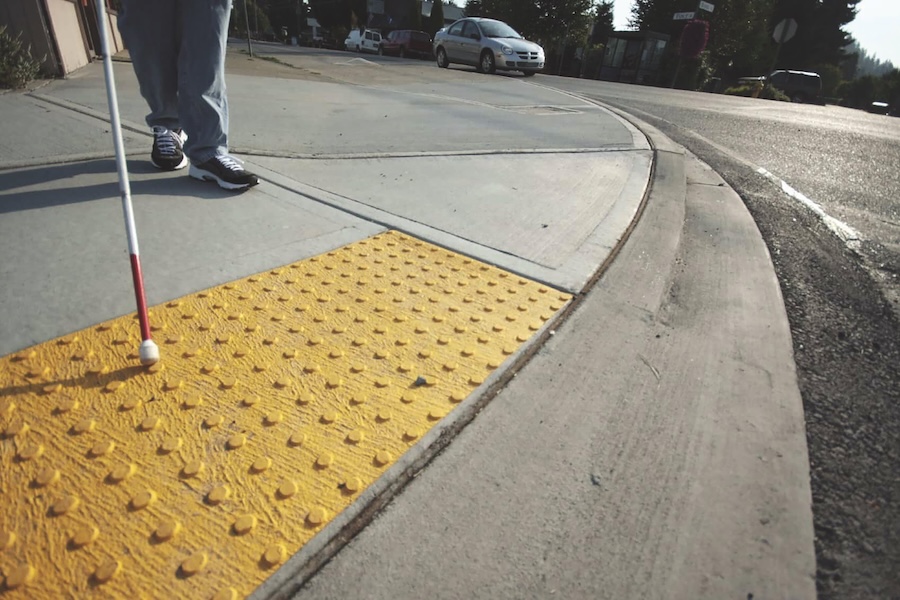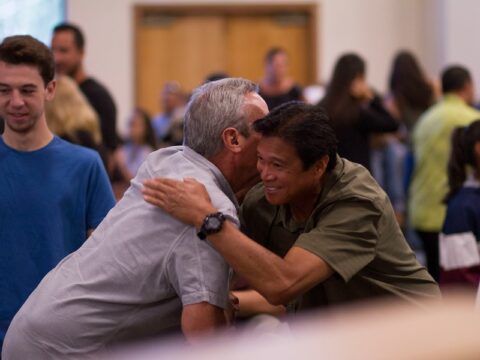I visit a French-inspired coffee shop just a block away from my midtown Toronto apartment on a weekly basis, but each time I walk in, I’m reminded of its inaccessibility. At first glance, the entrance, which is outfitted with a ramp, appears to be accessible. When coffee-loving patrons with mobility disabilities reach the door, however, they quickly realize it lacks an automatic opener.
Growing up with a disability and now working as an accessibility consultant, I notice these types of barriers all the time. For me, and for the estimated 27 percent of Canadians who also have a disability that affects their day-to-day activities (a number that Statistics Canada expects to increase as the baby boomers age), automatic door openers are just the tip of the iceberg.
You may unsubscribe from any of our newsletters at any time.
In 2019, the federal government passed the Accessible Canada Act (ACA), which aims to make Canada fully accessible by 2040. Despite this perception that the proverbial needle of accessibility is moving forward, Canada isn’t as accessible as it thinks it is. Many bars and restaurants still lack accessible washrooms; Braille menus and signage are still uncommon; obstacles make it hard for wheelchair users to navigate public spaces.
More on Broadview:
New findings from accessibility technology company AccessNow corroborated this reality as part of its research project, Mapping Our Cities for All. Considered Canada’s largest accessibility research initiative to date, the project evaluated the state of accessibility at more than 14,000 sites in Vancouver, Calgary and Ottawa. Released last November, the research found that almost 60 percent of public businesses were only partially accessible or not accessible. Much like my Toronto café, many of these spaces had some accessibility features, like a ramp, but also barriers, such as a bathroom only reachable by stairs.
AccessNow’s research found that part of the problem is the lack of accessibility data in Canada — put simply, if we don’t know the scope of the problem, we can’t work toward solutions. The report also noted that, while the ACA is a positive step forward, significant work still needs to be done. This was echoed in a recent report from Rich Donovan, who was appointed to review Ontario’s progress in implementing the recommendations outlined in the Accessibility for Ontarians with Disabilities Act (AODA), which was enacted in 2005. “There is a near unanimous consensus that the AODA is currently failing people with disabilities,” Donovan wrote, adding that the province’s state of accessibility is currently in “crisis.” What makes these findings especially troubling is that there’s no real system of accountability to ensure accessibility standards are being enforced. In recent years, we’ve even seen some spaces add barriers that weren’t there before.
Toronto’s Union Station, for instance, is considered accessible — it has accessible entrances and an elevator. But David Lepofsky, a long-standing disability activist and chair of the AODA Alliance, explained in a video that recent renovations include installing several pillars directly in the path of travel, making it difficult for someone with a mobility issue to navigate.
If we truly want to make Canada barrier-free by 2040, we need to conceptualize accessibility as more than just ramps and prioritize the lived experiences of people with disabilities. This starts with learning directly from the disability community to identify the multitude of barriers they face daily. Only then will this goal finally become a reality.
***
This story first appeared in Broadview’s June 2024 issue with the title “Beyond Ramps.”
Samuel Dunsiger is an Ottawa-based freelance writer, career adviser and accessibility advocate who identifies as disabled. He works within the intersection of employment and disability and enjoys using storytelling to normalize living with disabilities.















The greatest barrier is expense. Sure every restaurant should have washrooms on the main floor, but to rent a 1920 or 30’s building where such conveniences were not an issue, one must install a totally accessible washroom, or a lift. Try making a profit on a business after pricing these options out. A braille menu costs $300 -$700 each. Try changing your menu seasonally and your operating costs are huge for a small business.
Unfortunately we don’t live in a perfect world, and I hope I never have to rely on such services, but setting goals and being realistic are two different matters.